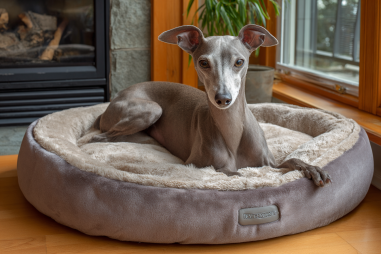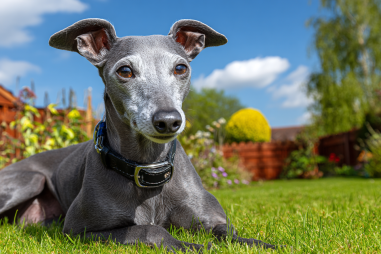Italian Greyhounds are elegant and affectionate dogs that often capture the hearts of their owners with their gentle nature and graceful movements. Despite their generally calm disposition, they can exhibit behavior problems if their physical and emotional needs aren’t adequately met. Understanding the common behavioral challenges and how to address them can help you foster a happy, well-adjusted canine companion.
Overview of Typical Behavior Challenges
Italian Greyhounds are known for their sensitive and sometimes shy temperament. While they tend to be friendly and loving, some behavioral issues can arise, often linked to their unique personality traits and needs. Typical problems include separation anxiety, excessive barking, destructive chewing, and occasional stubbornness during training. These behaviors can be frustrating but are usually signs that your dog is trying to communicate needs or discomfort.
Because Italian Greyhounds have a delicate and sensitive nature, they are vulnerable to stress and environmental changes more than some other breeds. This can sometimes manifest as fearfulness or avoidance behaviors, especially in noisy or unfamiliar situations. Recognizing these challenges early helps prevent escalation and builds a better relationship between you and your pet.
Causes of Anxiety, Barking, and Destructive Habits
Many behavioral issues in Italian Greyhounds stem from anxiety, which can be triggered by separation from their owner or lack of socialization. These dogs tend to form strong bonds with their human families and may become distressed when left alone for extended periods. Separation anxiety often leads to whining, barking, or destructive behavior such as chewing furniture or digging.
Excessive barking is another common problem, sometimes caused by boredom or a response to stimuli like strangers, other dogs, or unusual noises. Since Italian Greyhounds are alert and somewhat cautious by nature, they may use barking to communicate discomfort or seek attention.
Destructive habits like chewing or digging typically indicate that your dog is trying to relieve stress or entertain themselves. Without enough exercise or mental stimulation, their energy needs aren’t met, making destruction an outlet for their pent-up frustration or anxiety.
Training and Modification Techniques
Addressing behavior problems in Italian Greyhounds requires patience, consistency, and positive reinforcement. Harsh punishment or yelling can worsen anxiety or fear, so training should always be kind and encouraging. Start by establishing a routine that provides clear expectations and structure for your dog.
For barking issues, teaching the “quiet” command is effective. This involves rewarding your dog for stopping barking on cue and gradually increasing the time they remain quiet. It’s essential to identify triggers for barking and reduce their impact where possible, such as closing curtains to block outside distractions or using white noise to mask sounds.
To curb destructive chewing, redirect your dog’s attention to safe chew toys and increase interactive playtime. Reward good behavior generously to reinforce the idea that chewing their toys is more satisfying than your belongings.
Crate training can also be beneficial, offering a secure space for your Italian Greyhound to relax and feel safe, especially during periods when they are alone. The crate should be introduced gradually and always associated with positive experiences.
Environmental Adjustments
Creating an environment that caters to the needs of an Italian Greyhound can significantly reduce behavior problems. These dogs are sensitive to temperature extremes due to their thin coat and low body fat, so keeping them comfortable with cozy bedding and temperature control is important. A secure, safe space also helps reduce anxiety.
Minimizing sudden loud noises and overwhelming stimuli in your home helps your dog feel more at ease. If your Italian Greyhound is prone to anxiety, consider using calming products like pheromone diffusers or anxiety wraps, which can create a more soothing atmosphere.
Providing vertical spaces or cozy corners allows your dog to retreat and decompress when needed. Consistent daily routines help build predictability, which reduces stress and improves overall behavior.
Role of Exercise and Mental Stimulation
Italian Greyhounds have a surprising amount of energy despite their delicate appearance. They benefit greatly from regular physical activity and mental challenges to keep them content and balanced. Daily walks, playtime, and opportunities to run in safe, enclosed areas help release excess energy that might otherwise be channeled into negative behaviors.
Mental stimulation is equally important, as these dogs are intelligent and enjoy activities that challenge their minds. Puzzle toys, obedience training sessions, and scent games keep their brains active and engaged. Boredom is a significant contributor to behavior problems, so keeping your dog entertained is a key component of prevention.
Interactive play strengthens your bond and allows your Italian Greyhound to express natural behaviors like chasing or hunting in a controlled way. A well-exercised and mentally satisfied dog is generally calmer and easier to train.
When to Seek Professional Help
If behavior problems persist despite your best efforts, consulting a professional can make a considerable difference. A certified dog trainer or a veterinary behaviorist can provide tailored guidance and support for complex issues like severe anxiety or aggression.
Professional assistance is particularly important if your Italian Greyhound’s behavior affects their safety or well-being, or disrupts your household. Early intervention often prevents minor issues from escalating into more serious problems.
Additionally, a veterinarian can rule out any medical conditions that might contribute to behavioral changes, such as pain or hormonal imbalances.
Encouraging Positive Behavior
Promoting good behavior in Italian Greyhounds revolves around meeting their unique physical and emotional needs with compassion and consistency. Providing a loving environment, plenty of exercise, mental challenges, and gentle training fosters a trusting relationship where your dog feels secure and content.
Remember that patience is vital; changes may take time, but with persistence, your Italian Greyhound can overcome common behavior problems and thrive as a happy member of your family.
By understanding your dog’s nature and responding appropriately to behavioral signals, you encourage a lasting bond filled with joy and mutual respect.







